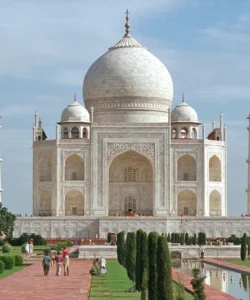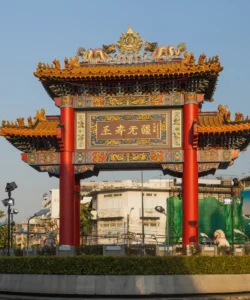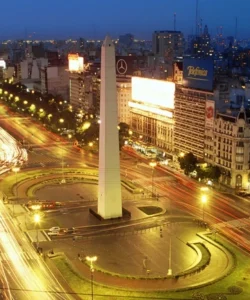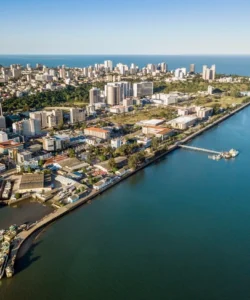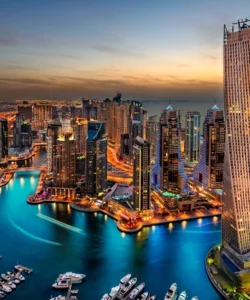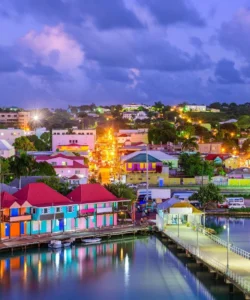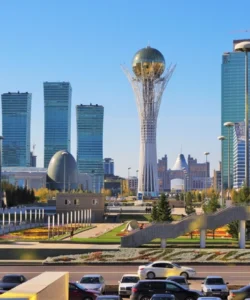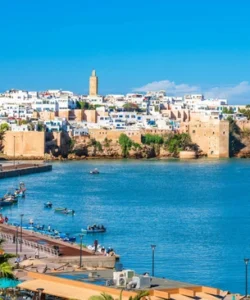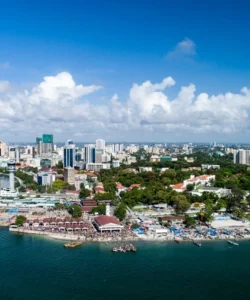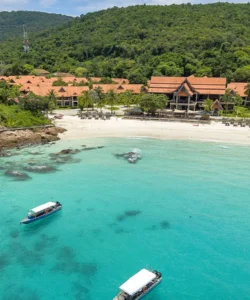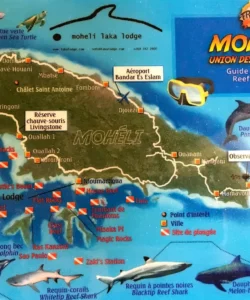Georgia is a fascinating country located at the crossroads of Eastern Europe and Western Asia, bordered by Russia, Turkey, Armenia, and Azerbaijan, with the Black Sea to its west.
![]()
Area: Georgia covers an area of 69,700 square kilometers (26,900 sq mi).
Population: The population of Georgia is approximately 3.9 million, with over a third residing in the capital city.
Capital: The capital and largest city is Tbilisi.
Major Cities: Besides Tbilisi, other major cities include Batumi, Kutaisi, Rustavi, Sukhumi, and Gori.
Language: The official language is Georgian.
Currency: The currency of Georgia is the Georgian Lari (GEL), which is divided into 100 tetri. Its symbol is ₾ or ლ.
Religion: The predominant religion in Georgia is Christianity, with the majority belonging to the Georgian Orthodox Church (around 83.4%). There is also a significant Muslim population (10.7%) and other Christian denominations.
Attractions & Wonders:
Georgia boasts a diverse range of attractions, from historical sites to stunning natural landscapes:
- Natural Wonders:
- Providence Canyon (Georgia’s Little Grand Canyon): A geological wonder with colorful layered soils.
- Amicalola Falls: The highest waterfall in Georgia.
- Okefenokee Swamp: A vast wildlife refuge.
- Radium Springs: A large natural spring with deep blue waters.
- Stone Mountain: A massive granite dome near Atlanta.
- Tallulah Gorge: A spectacular canyon.
- Warm Springs: Known for its healing waters.
- Historical and Cultural Sites:
- Tbilisi’s Old Town: A vibrant area with a mix of historical landmarks and modern attractions, including colorful sulfur baths, Orthodox churches, mosques, and synagogues.
- David Gareja Monastery Complex: An ancient site with 15 monasteries carved into stone.
- Vardzia: A unique troglodytic (cave) town.
- Katskhi Monastery: A 10th-century structure with a triple-tiered design.
- Upper Svaneti fortifications and Shatili: Fine examples of medieval Georgian castles and fortifications.
- Dadiani Palace: A neo-Gothic structure.
- Rustaveli Avenue (Tbilisi): Features refined 19th and 20th-century European architecture.
Architecture:
Georgian architecture is characterized by monumentality, clear composition, strict proportions, and moderate decoration, harmoniously interacting with nature. Notable styles include:
- Medieval Church Architecture: Distinctive “Georgian cross-dome style” with conical domes raised on drums over rectangular or cross-shaped structures, developed from the 9th century onwards.
- Palladian Architecture: Influenced by English country house architecture, emphasizing wide and shallow structures with regularly placed, large windows.
- Neoclassicism and Baroque: Seen in buildings like the State Theatre in Senaki.
- Neo-Gothic: Exemplified by the Dadiani Palace.
Roads: While specific details on nationwide road conditions are not readily available, major cities like Tbilisi have modern infrastructure. For mountain regions and more remote areas, road conditions might vary.
Hotels: Georgia offers a wide range of accommodation options, from luxury to budget-friendly.
- Notable Hotels in Tbilisi: Iveria Inn Hotel, Shota@Rustaveli Boutique Hotel, ibis budget Tbilisi Center, ibis Styles Tbilisi Center, Holiday Inn Express Tbilisi Avlabari.
- Many hotels in Tbilisi are located centrally, providing easy access to attractions.
Restaurants & Cuisine: Georgian cuisine is known for its rich flavors and unique dishes.
- Must-Try Dishes:
- Khachapuri: Iconic cheese bread with regional variations.
- Khinkali: Georgian dumplings, a must-try.
- Lobio: Stewed beans, often served in a clay pot.
- Badrijani Nigvzit: Eggplant with walnut paste.
- Pkhali: Vegetable and walnut spreads (e.g., spinach, beets, cabbage).
- Shkmeruli: Garlic chicken in milk sauce.
- Churchkhela: A traditional Georgian candy made of nuts threaded on a string and dipped in thickened grape juice.
- Satsivi: Poultry (often chicken) in a rich walnut sauce.
- Soko Ketsze: Clay pot mushrooms.
- Other Notable Dishes: Abkhazura (meatballs), Achma (layered cheese and bread), Ajapsandali (eggplant, potato, onion stew), Kuchmachi (chicken livers), Kupati (fried sausage).
- Georgian wine is also world-renowned, especially from the Kakheti region.
Annual Travel (Tourism Statistics):
Georgia has seen a significant recovery in tourism following the pandemic.
- In 2023, Georgia welcomed over 21.1 million international and domestic tourists, with 5.14 million being international visitors and 15.9 million domestic travelers. This represents a 15% increase from pre-pandemic levels (2019).
- In 2019, Georgia attracted 6.4 million international visitors.
- Tbilisi remains the most visited city, attracting over 250,000 tourists in 2023.
- Adjara, particularly Batumi, is a popular destination for its Black Sea resorts.
Best Time to Visit:
The shoulder months of May, June, or September are generally considered the best times to visit Georgia. This avoids the peak summer heat and crowds, as well as the freezing winters.
- Hiking: For trekking in the Caucasus mountains, July and August are ideal as trails reopen.
- Wine Harvesting: Late September to mid-October is harvest time in Kakheti, perfect for wine tasting and grape harvesting.
- Winter: December to February can be cold with snow, especially in mountainous regions, but offers a quieter travel experience in cities.

